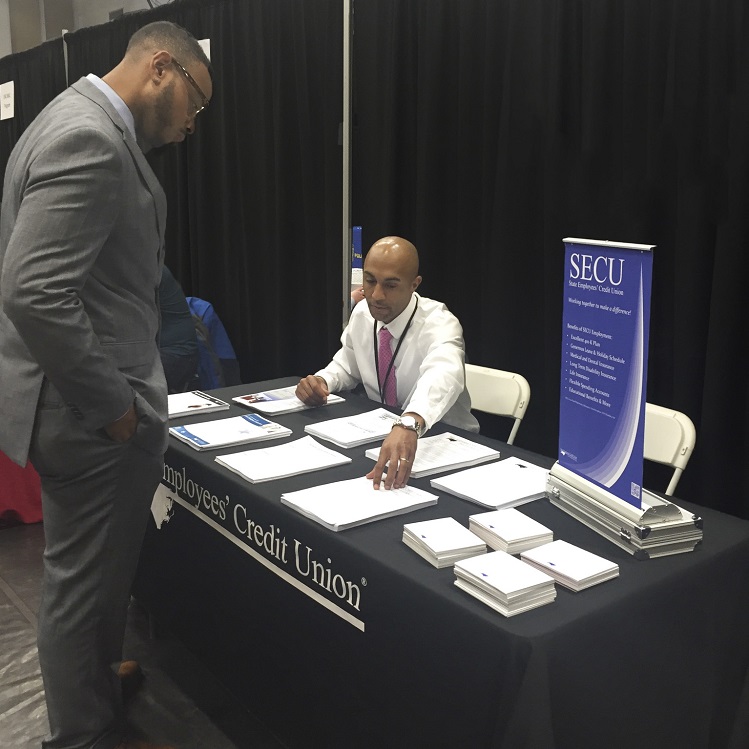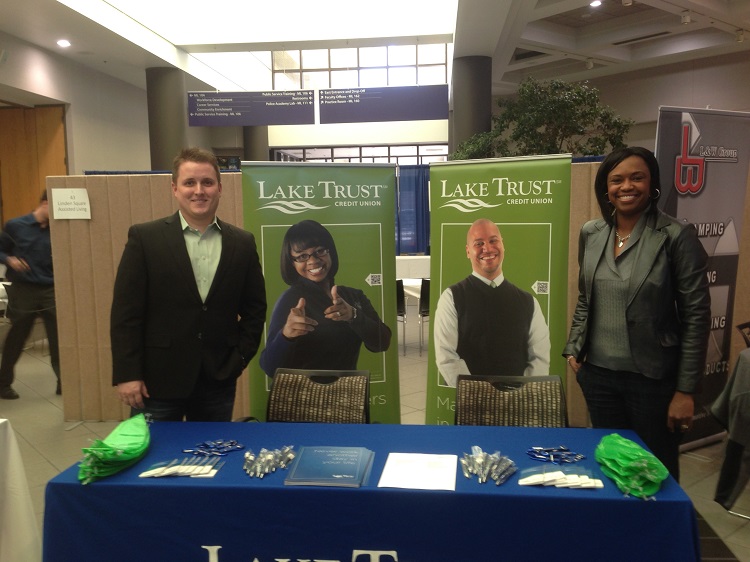Identifying the best candidates for an open position might not be rocket science, but sometimes, it’s a scientist a credit union needs.
Virginia Credit Union ($3.4B, Richmond, VA) has added 100 new positions in the past two years, boosting its FTE count to 674 as of March 31, 2017, according to data from Callahan & Associates. The Old Dominion credit union has tapped talent from unexpected places, including a lead data scientist from a large bank and an innovation specialist from the auto industry.
“These new managers are leading the effort to create a smarter, next-best-product model and foster a more pioneering culture” says executive vice president and chief information officer, Chris Saneda. “Meanwhile, a data management effort at VACU requires finding talent with experience and the ability to learn while incorporating data warehousing, governance, retention, and reporting into everyday life.”
“Our traditional approaches will not keep us competitive in this hyper-changing world” Saneda says. “We need to learn and change direction in rapid fashion and with less risk.”
Despite how specialized these positions are, there also exist commonalities when it comes to recruiting any position within VACU. That’s why the credit union has developed a few power resources including LinkedIn, staffing agencies, internal promotions, and employee referrals for its hiring, says president and CEO Chris Shockley.
“Our good reputation in the marketplace has helped us with recruiting” Shockley says. “And our employees advocate for VACU among job seekers.”
Seek A Servant’s Warm Heart, But Don’t Be Afraid To Offer Cold, Hard Cash
“We look for someone who has a passion for serving others” says Michael Dougal, chief human resource officer for the past four years at 165-employee Patriot Federal Credit Union ($580.5M, Chambersburg, PA).
The Keystone State cooperative also offers a $500 bonus to staffers who successfully recruit a new employee.
“When recruiting for member-facing jobs, we look for candidates with experience in the service industry and who are excited about our servant-leadership philosophy” Dougal says. “If that doesn’t come through on the initial phone screen, the applicant generally does not advance to an in-person interview.”
Read more in Changing The HR Culture, One Coaching Session At A Time.
Think In Pieces
Linda Bodie’s title at Element Federal Credit Union ($31.2M, Charleston, WV) is Chief + Innovator. That innovation includes hiring parts of people.
“Sometimes you can’t get 100% of the desired skill set think marketing, graphic design, video creators, storytelling, and campaign creation” Bodie says. “If we can’t get the ideal person, we get multiple pieces of the position through third-party consultants, agencies, and sole proprietors. We can fill a very specialized role by doing this.:
When it comes to hiring an entire person for her 16-member staff, Bodie says employee referrals have produced the best candidates.
“Employees are good at sharing our culture with potential new hires” the chief innovator says. “Standard recruitment methods yield typical bankers’ and that’s not what we look for. We hire for personality and culture and a commitment to member needs. Then we teach them the mechanics and processes.”
Pay For More
State Employees’ Credit Union ($36.5B, Raleigh, NC) offers a nice perk to potential hires: 100% reimbursement for the cost of a two-year, college-transfer program degree through the Tarheel State’s community college system.
That helps fill the front-line needs of the credit union’s network of 257 branches ? including several that also house contact centers. Such a decentralized approach is part of SECU’s long history of serving the specific needs of its communities and adapting to what the local workforce offers.
Workforce skillsets and availability vary widely across the state, and local managers use the hiring strategies that work best in their location, says Leigh Brady, executive vice president of organizational development at the nation’s second-largest credit union, which employs 6,232 FTEs, according to data from Callahan & Associates.

“Our managers have done a great job of adapting to changes and recruiting via career fairs and word-of-mouth advertising” Brady says. “Our local advisory board members also refer candidates.”
The 29-year SECU veteran adds “We have some work to do in terms of automating the application process and applicant tracking. But the local decisioning process is working well.”
Read more in A Staffing Strategy With Social Benefits.
Put ‘Em On The Spot
Patelco Credit Union ($5.7B, Pleasanton, CA) uses a heaping helping of technology including LinkedIn, Indeed, and Glassdoor to attract candidates and manage the hiring process.
And although many credit unions are in a tough job market, the Bay Area credit union is in a particularly tough one.
“The greatest challenge for us is our location” says Susan Makris, the 662-employee credit union’s senior vice president and chief human resources officer. “We’ve targeted advertising on Glassdoor to generate not only awareness but also interest in Patelco’s mission.”
That mission includes building the financial health and well-being of members as well as making a difference in the lives of members and employees. But even the best candidates on paper and during the interview can perform flatly when it comes to member service. That’s why the credit union conducts pre-screen interviews by webcam and smartphone for member-facing positions such as in the contact center.
“If you can come across as an engaged candidate on the screen in an interview, you’ll likely be able to also effectively engage members” Makris says.
Patelco uses iCIMS applicant recruiting and tracking software. Find your next technology solution in Callahan’s online Buyer’s Guide.
Know Your Deficiencies
Turnover at Simplot Employees Credit Union ($19.7M, Caldwell, ID) has hit 50% in the past few years. But then again, the tiny shop has only eight employees.
Working in a small credit union has taught CEO Val Brooks a thing or two about covering all the skill sets needed to run a financial institution.
“I look for skills in others that are not my strong suits” Brooks says. “For example, I’m not an accountant, so I’ve surrounded myself with people who are strong in accounting.”
Five of nine employees have left the credit union and one position was eliminated since Brooks arrived five years ago. Planning for turnover is important at any credit union, but it’s essential in institutions with such limited staffing. That’s why Brooks has several ways to identify potential hires.
“I look to current employees to recommend people who would fit with our team” Brooks says.
She also uses her own network of credit union contacts and says two of her six hires have come from the state employment site.
Read How This Single-Sponsor Credit Union Hangs Tough to learn more about how new products and old-fashioned service are helping Simplot Employees succeed in a new age.
Shop For Staff
The headhunters at Lake Trust Credit Union ($1.8B, Brighton, MI) evaluate their own shopping experience when visiting local retailers.
“When we’re wowed by the experience, we talk with the employee about the potential of working for Lake Trust” says Brandi Winchester-Middlebrook, the credit union’s vice president of culture and engagement.
That’s one of several strategies Lake Trust uses to find the right people for the job.

With 388 employees and the most turnover in application development, contact center, and branch positions the Wolverine State credit union keeps an open mind for finding that perfect hire.
“There’s not one channel that works all the time” Winchester-Middlebrook says.
Dig Deep, Even If You Don’t Have To
Debbie Almirall, president and CEO at the 25-employee Minnesota Power Employees Credit Union ($96.5M, Duluth, MN), says strong community relations is one of her best sources for the right hire.
“We’ve been fortunate that people have been calling us to work here due to our relationships in the community” says Almirall. The relationship hires have been great and so has our last group of teller hires.
But just because MPECU has a deep hiring pool doesn’t mean it just plucks out any old applicant.
“We interview a ton of applicants until we find the right fit” the CEO says. Taking more time and waiting for the right people has been the key to our success.
Look Long-Term
Navy Federal Credit Union ($81.5B, Vienna, VA) has approximately 14,000 employees and 300 locations. It also employs a variety of tactics to find the right hires.
“We tailor our talent acquisition strategy to the position” says Michelle Kaufman, vice president of employee services. “We use external job boards to post positions, we’ve developed partnerships with universities, we attend community events and job fairs, and we use LinkedIn.”
Once on board, Navy Federal provides professional and personal development opportunities and programs starting from day one and continuing throughout an employee’s career.
According to Kaufman, that’s one factor that earns Navy Federal accolades as a great place to work from publications like FORTUNE and People. Knowing employees have long-term employment prospects also shows up as a variable in the credit union’s Great Place to Work Trust Index Survey.
Go Back For The Future
Peninsula Community Credit Union ($175.5M, Shelton, WA) has found that sometimes the best new employees are old ones.
The 62-employee Evergreen State credit union, which serves the westernmost city on the Puget Sound, sees turnover in its branches for the same reason as any other credit union: family, moving, school, and other employment opportunities.
It might sound counterintuitive, but the credit union has found ex-employees who did their jobs well and embraced the member service ethos are good targets to fill open positions.
“Contacting former employees to see if they’re interested in returning and being flexible in the job negotiations might prove beneficial” says Gail Ryan, vice president of human resources and a 40-year employee of the credit union.
Ryan also touts the virtue of patience.
“Filling a position just for the sake of getting someone hired most likely will cause more issues in the long run” Ryan says.